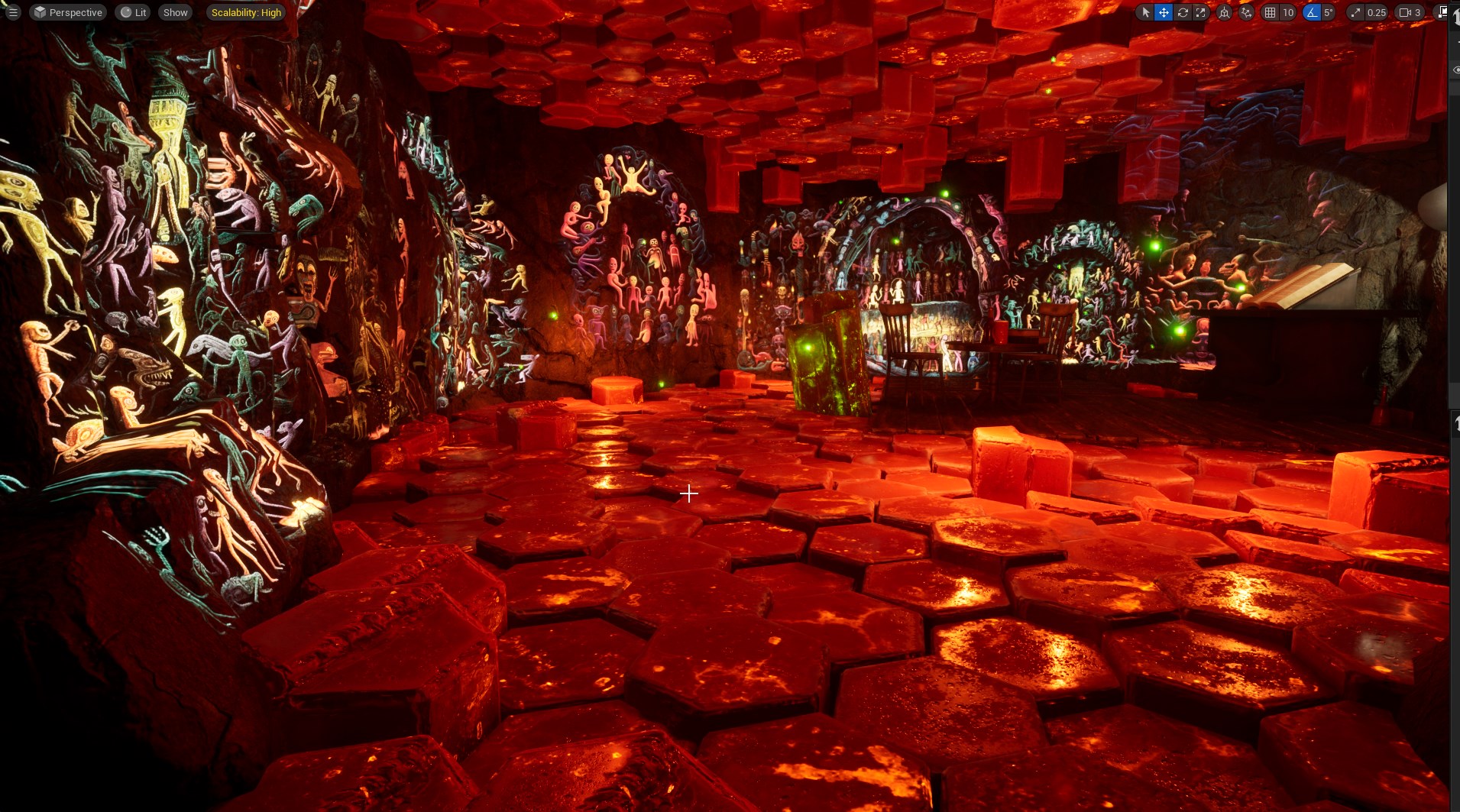Unreal Engine, created by Epic Games, is a widely used game engine that has become a staple in the game development industry. The engine is known for its powerful tools, intuitive workflow, and ability to create stunningly realistic environments and characters. In this article, we will explore the history of Unreal Engine, its key features, and how it has become a go-to choice for game developers.
The first version of Unreal Engine, Unreal Engine 1, was released in 1998. It was initially created for Epic Games’ first-person shooter game, Unreal. The engine was built on the idea of providing game developers with the ability to create high-quality 3D environments with a minimal amount of programming knowledge. This approach was a game-changer for the industry, as it allowed small teams of developers to create high-quality games that could compete with those produced by large studios.
One of the key features of Unreal Engine 1 was its use of pre-baked lighting, which allowed for detailed and realistic environments to be created without the need for expensive hardware. This feature, along with its powerful scripting language, made it possible for developers to create immersive and believable worlds with minimal effort.
Unreal Engine 2 was released in 2002, and it brought several new features to the table. One of the most notable was its support for hardware-accelerated rendering, which allowed for even more detailed and realistic environments to be created. The engine also introduced a new physics system, which allowed for more realistic interactions between characters and the environment.
Unreal Engine 3 was released in 2006, and it brought several significant changes to the engine. One of the most notable was its support for multi-core processors, which allowed for even more detailed and realistic environments to be created. The engine also introduced a new physics system, which allowed for more realistic interactions between characters and the environment. Additionally, the engine introduced support for DirectX 9 and 10, which allowed for even more detailed and realistic environments to be created.
Unreal Engine 4, the previous version of the engine, was released in 2014. Unreal Engine 4 was a revolutionary release for the engine, introducing several new features and improvements that made it a powerful and versatile tool for game developers. Some of the key features that made Unreal Engine 4 so revolutionary include:
- The Unreal Editor: Unreal Engine 4 introduced a new and more intuitive editor, which made it easier for developers to create and edit their games. The editor included new tools for creating and editing 3D environments, characters, and animations.
- Real-Time Rendering: Unreal Engine 4 introduced real-time rendering capabilities, which allowed developers to see their game in action as they worked on it. This made it easier for developers to make changes and see the results in real-time, which significantly improved the workflow.
- Blueprint Visual Scripting: Unreal Engine 4 introduced a new visual scripting system called Blueprints. This system allowed developers to create complex gameplay mechanics and AI behavior without the need for traditional programming. This made it easier for developers to iterate on their ideas and create unique and engaging gameplay experiences.
- Advanced Physics and Animation: Unreal Engine 4 introduced a new physics engine and animation system, which allowed developers to create highly realistic and interactive environments. The engine’s physics system supported realistic collisions and ragdoll physics, while the animation system supported inverse kinematics and motion capture animation.
- Mobile and Virtual Reality Support: Unreal Engine 4 introduced support for mobile and virtual reality platforms, which made it possible for developers to create games for a wide range of devices. The engine’s support for mobile platforms such as iOS and Android, as well as virtual reality platforms such as Oculus and Vive, opened up new opportunities for developers to reach new audiences and create immersive experiences.
- Accessibility: Unreal Engine 4 was made available to developers for free, with a revenue sharing model, making it more accessible than ever before, which helped to democratize game development and empower a new generation of developers.
All these features, combined with the continuously updated documentation, tutorials and the community, made Unreal Engine 4 a powerful and versatile tool that could be used to create high-quality games across a wide range of platforms and genres, making it a popular choice among game developers.
Unreal Engine 5 is the latest version of the Unreal Engine, which was announced by Epic Games in May 2020 and released in May 2021. It brings several new features and improvements to the engine, making it more powerful and versatile than ever before. Some of the key new features in Unreal Engine 5 include:
- Nanite: Nanite is a new virtualized geometry system that allows for highly detailed and realistic environments to be created with minimal effort. It allows developers to import and use high-polygon models directly in the engine, without the need for manual optimization, which saves a lot of time in the development process.
- Lumen: Lumen is a new global illumination system that allows for more realistic and dynamic lighting. It supports both static and dynamic lighting, and it allows for accurate and efficient real-time global illumination, which creates more believable and immersive environments.
- Temporal Upsampling: This feature improves image quality by using a deep learning algorithm to upscale the resolution of images in real-time, which helps to eliminate jagged edges and improve overall image quality.
- Audio Engine: Unreal Engine 5 has a new audio engine that allows for more realistic and immersive audio experiences. It supports 3D spatialization, which allows for the accurate placement of sounds in 3D space, and it supports ray tracing, which allows for more realistic reflections and occlusion.
- Chaos Physics: Chaos Physics is a new physics simulation system that allows for more realistic and dynamic interactions between characters and the environment. It supports large-scale destruction, rigid-body physics, and fluid simulations, which help to create more immersive and believable environments.
- Next-Gen Console Support: Unreal Engine 5 has been optimized for the next-generation of gaming consoles, such as Xbox Series X and PlayStation 5, which allows developers to create visually stunning and immersive games that take advantage of the full capabilities of these platforms.
- Improved Animation and Character System: Unreal Engine 5 has improved the animation and character system, which allows for more realistic and believable characters, and the new system supports a wide range of animation techniques, such as motion capture and inverse kinematics, which makes the animation of characters more intuitive.
These new features and improvements in Unreal Engine 5 make it a powerful and versatile tool for game developers, and allow them to create more realistic and immersive games than ever before, and can also be used for architectural and product visualization, film and animation, automotive and transportation design and many other fields.











